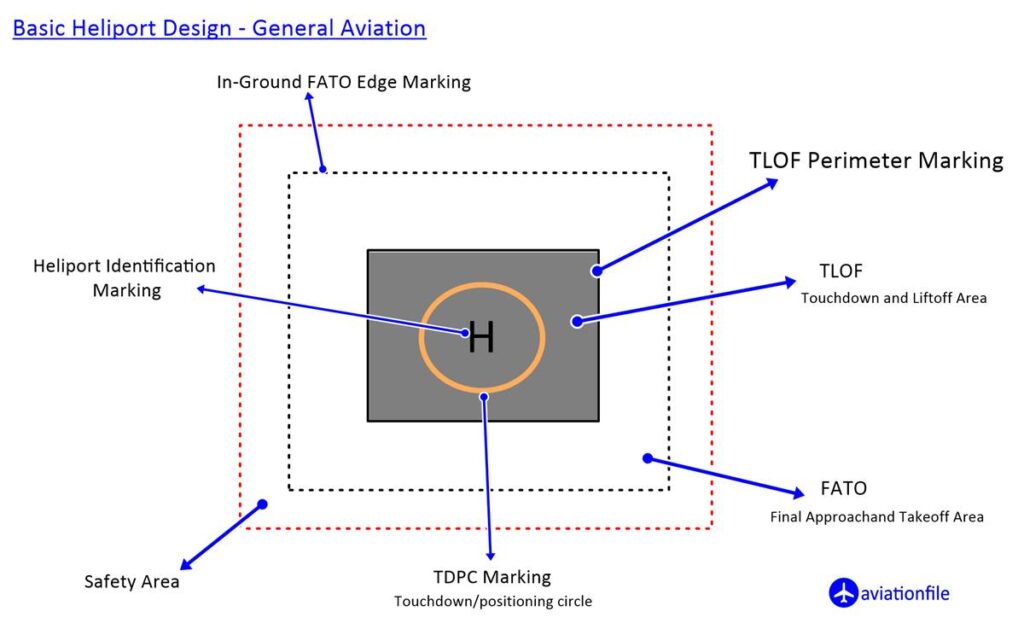Design of a HELIPORT
A heliport is a designated area for the landing and takeoff of helicopters. It can be a small, basic facility with just a landing pad, or a larger, more complex facility with multiple pads, hangars, and other support structures. Heliports can be located on land or on water and can serve a variety of purposes, such as providing emergency medical transportation, supporting offshore oil and gas operations, or serving as a hub for air tours. Design of heliports must comply with regulations set forth by the Federal Aviation Administration (FAA) or the International Civil Aviation Organization (ICAO) for safety and operation.
The design of a heliport typically includes the following elements:
Helipad: This is the area where helicopters land and take off. It can be made of concrete, asphalt, or a combination of both, and must be large enough to accommodate the specific type of helicopter that will use the heliport.
Approach and departure paths: These are the paths that helicopters follow when approaching and departing the helipad. They must be clear of obstacles and provide enough space for helicopters to safely maneuver.
Lighting: Heliports must be equipped with lights to aid in visibility during landing and takeoff, particularly at night or in low visibility conditions.
Markings: Helipads must have markings to indicate the edges of the landing area and other important information such as the heliport’s identification number.
Safety features: Heliports must have safety features such as fire suppression systems and emergency medical equipment.
Access road and parking: A heliport must have access road and parking facilities for emergency vehicles, crew and passengers.
Weather monitoring equipment: Heliport should be equipped with equipment to monitor weather conditions such as wind speed and direction, visibility, and cloud height. For example wind cone.
Air traffic control service: Heliport should have an air traffic control services for the safety of the aircraft and passengers.

Heliport should be designed with potential future expansion in mind, to allow for the addition of new facilities or the accommodation of larger aircraft. It is important to consult with experts in the field of aviation engineering, architecture and other related field for the design of heliport to ensure that the facility will meet all the necessary safety, regulatory and operational requirements. Note that the design requirements may vary depending on the location and intended use of the heliport. Farewell…
sources:
https://heliportlighting.com/heliport-design/
https://www.faa.gov/airports/resources/advisory_circulars/index.cfm/go/document.current/documentnumber/150_5390-2
https://www.icao.int/MID/Documents/2015/Heliport%20Seminar/IHS%20-%20Day%202%20-%20Session%205%20-%20Khalid%20Kodsi%20-%20Heliport%20Design%20Overview%20-%20USA%20Perspective.pdf


